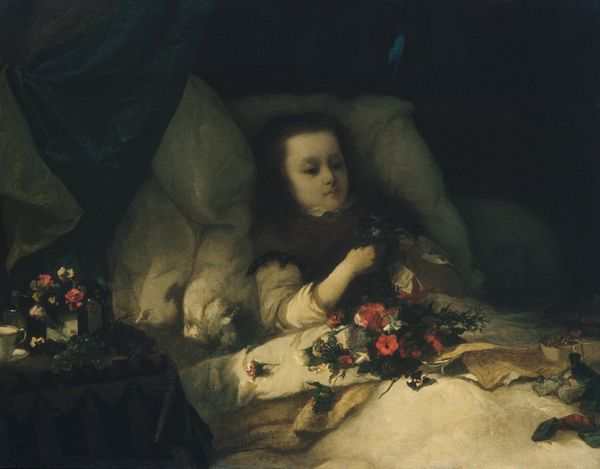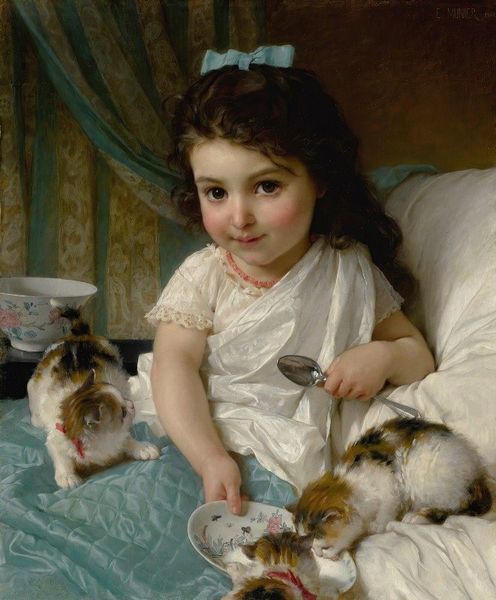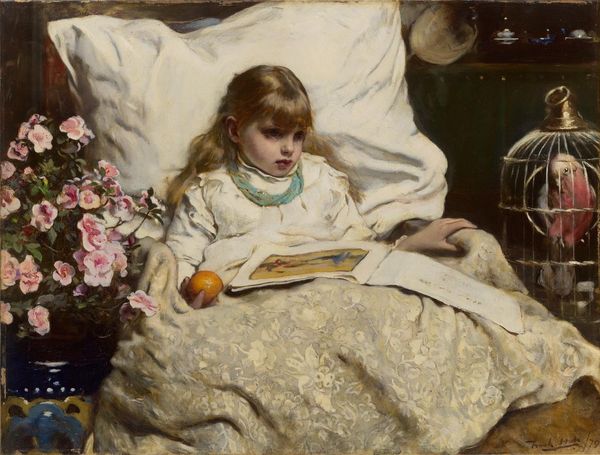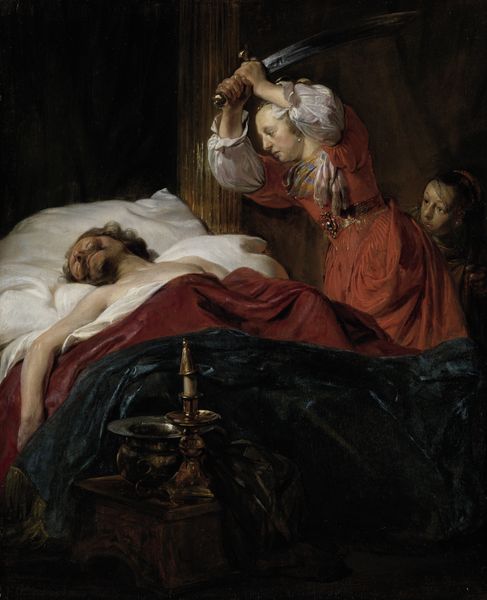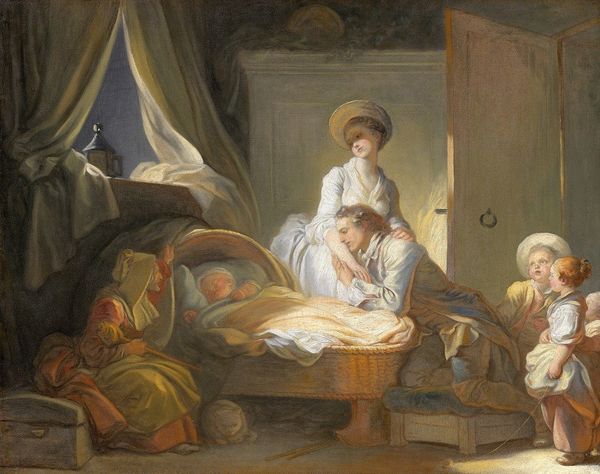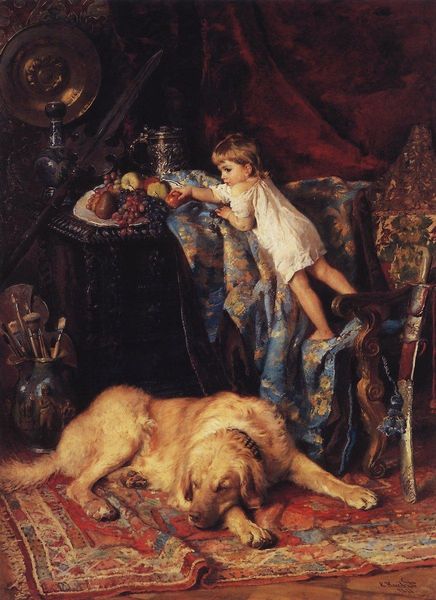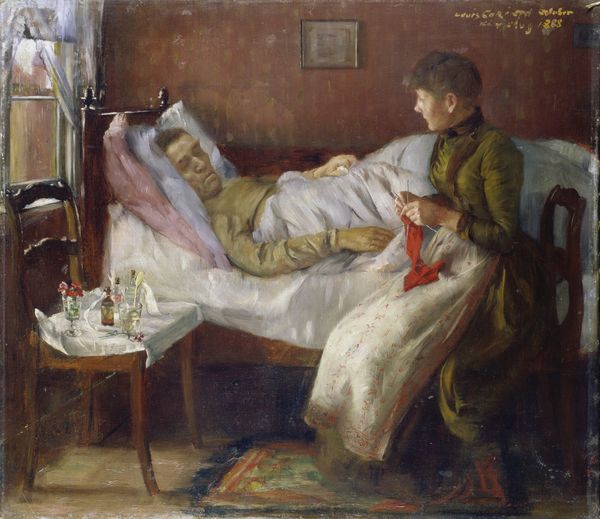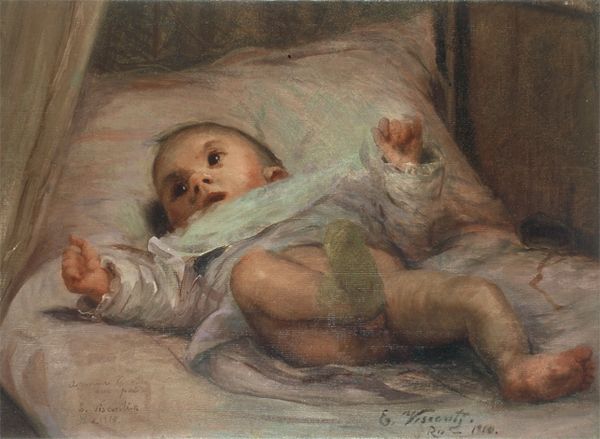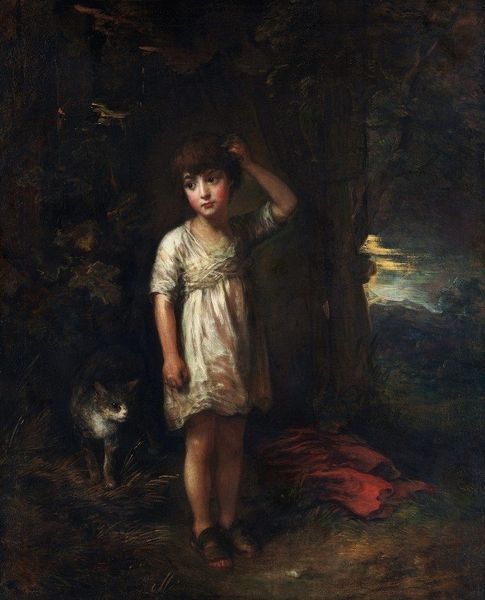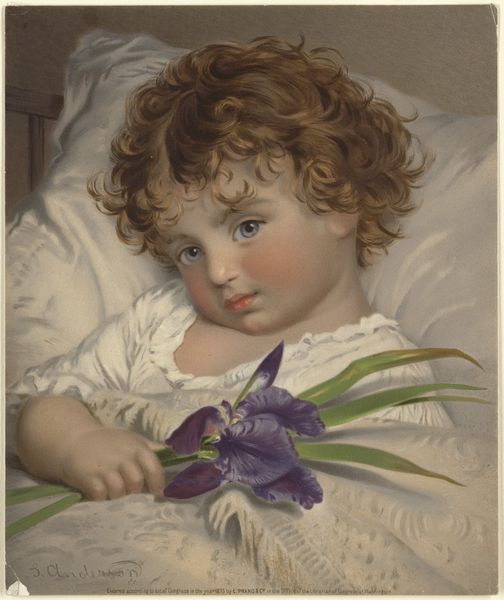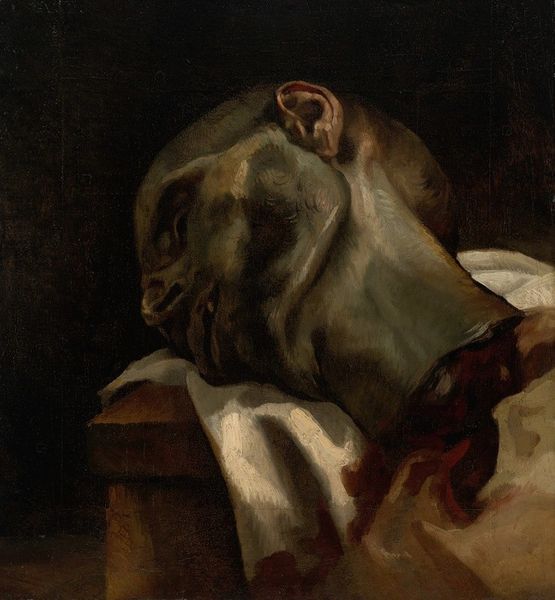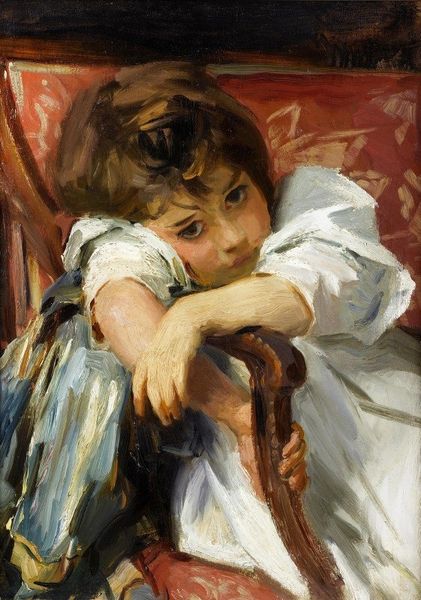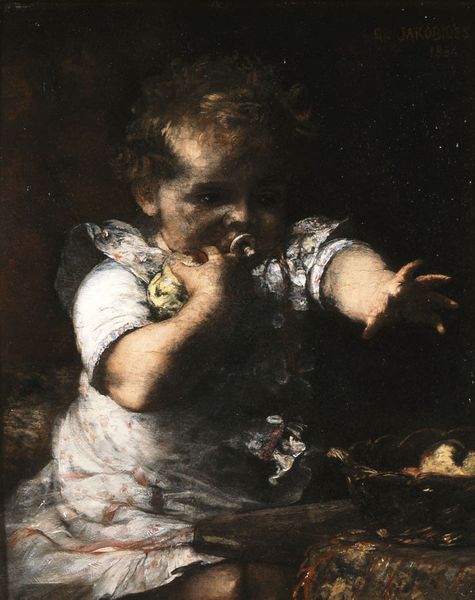
Dimensions: 65.3 x 81.7 cm
Copyright: Public domain
Curator: Right, let’s delve into Gustave Doré’s "Little Red Riding Hood" from 1862, an oil painting currently residing at the National Gallery of Victoria. Editor: It has a poignant, slightly unsettling feel. I can almost smell the musty sheets. Doré really captures the moment of dawning horror. It's intimate, claustrophobic even. Curator: Indeed. Doré, while renowned for his engravings, particularly those illustrating literary works, also painted. His "Little Red Riding Hood" situates itself within the visual culture that shaped and re-shaped folklore, becoming quite a popular and commodified art during this time. Notice the attention to texture, the way the light catches the ruffled cap and coarse linen. The means of representation really drive home that fairytale’s intersection with material reality. Editor: I can practically feel the texture of that blanket clutched in her small fist. The artist uses it like a veil between the child and her nightmare. Red Riding Hood appears to grasp it, hesitant and childlike, caught at the instant before she screams. There's almost an overwhelming, heartbreaking intimacy. Curator: The scale matters too, it avoids grandeur and offers a glimpse into what’s usually absent from grand narratives: the interior, domestic spaces and quiet terror. It implicates the viewers in its narrative, pushing them towards voyeurism but simultaneously awakening their moral reflexes. We, as consumers of this visual tale, can't ignore our role within the painting's structure. Editor: Absolutely. And it seems to echo throughout the work... the story, in turn, is part of *us*. She sees it in the faux grandma's beady little eyes, that glimmer that doesn't belong to the beloved grandparent figure. It’s deeply unsettling, and powerfully evocative. Curator: By representing these stories, often targeting children as part of popular books, Doré really intersected the spheres of high and low art. Consider, that each brushstroke echoes centuries of accumulated folklore passed from mouth to mouth. Editor: Looking at this oil painting, with its almost suffocating feeling, makes me ponder... It speaks to the endless repetition of fear and dread, to its transmission, and the necessity for our survival through recognizing horror. It reminds us of ourselves, how even the most terrible realities might be survived through storytelling. Curator: Precisely. And by framing and re-presenting what might be commonly accepted material, Doré is exposing our anxieties in consumable form. Editor: Thank you, my insights have truly expanded on it as well. I hope this new context does for listeners as well.
Comments
No comments
Be the first to comment and join the conversation on the ultimate creative platform.
